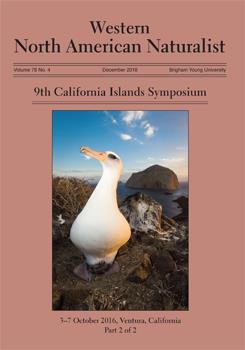Paula Power, Rocky Rudolph
Western North American Naturalist 78 (4), 530-539, (31 December 2018) https://doi.org/10.3398/064.078.0402
Although it is critical for survival of plants and animals, and for understanding prehistory of early humans, little work has been done on the stream hydrology of the California Channel Islands. In September 2014, August 2016, and October 2017, during the driest period of the year, park staff and volunteers mapped surface water on Santa Rosa Island, Channel Islands National Park, by walking drainages (2nd order and higher) and recording the location of surface water using consumer-grade Global Positioning System (GPS) units. In 2014, mappers hiked 293 km (182 miles) of stream channel in 19 major drainage basins and 7 lesser drainage basins. The hiking teams recorded 759 water features (pools and springs) and 67 km (42 miles) of surface water. The 2016 repeat mapping in Verde, Trancion, Arlington, and San Augustin canyons, the 4 wettest drainages in 2014, showed that surface water declined by 10.1%, 21.1%, and 34.2% for the first 3 canyons, respectively; surface water in San Augustin increased by 1.3% between 2014 and 2016. Repeat mapping in 2017 of Verde, Trancion, Arlington, San Augustin, and Water canyons showed an increase from 28.3% to 90.0% in surface water following an above-average rainfall year in 2016–2017. Results have important implications for plant and animal life that depend on water on Santa Rosa Island.

